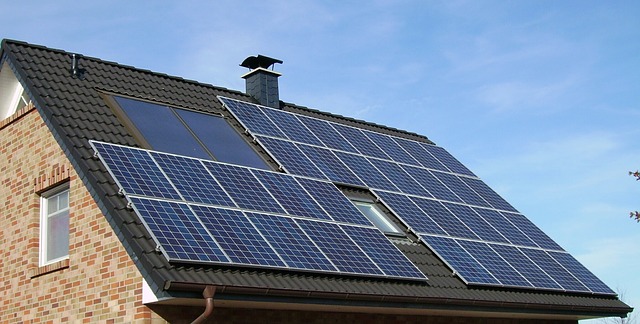Should Your Home Switch to a Renewable Energy Source?
Renewable energy sources have been on the rise in homes, especially over the last 20 years. Switching to a renewable energy source can be beneficial for cutting down on your energy bill, but different homes require different sources. At Ecotelligent Homes, we recommend starting with an energy audit to determine if your home needs energy improvements prior to renewable energy. If the home has drafts or poor insulation, then renewable energy sources can’t be as effective. After we complete your comprehensive home energy audit, we can make recommendations to improve the energy efficiency of your home and suggest renewable sources like solar panels or geothermal heat pumps. Learn more about these renewable energy sources.
SOLAR PANELS
What are solar panels?
A solar panel takes in energy called photons from the sun’s rays. The photons generate electricity for your home.
What are the benefits of solar panels?
A well-known benefit of solar panels is reducing your energy bill due to the panels powering your home. Solar panels often come with rebate options, which is another money-saving benefit. Additionally, depending on where you live, tax credits may be available to you.
Another well-known benefit of solar panels is helping the environment. By powering your home from the solar panels as much as possible, you’re reducing your home’s greenhouse gas emissions. With solar panels, your home isn’t using as much fossil fuels.
GEOTHERMAL HEAT PUMPS
What are geothermal heat pumps?
Geothermal heat pumps transfer heat from the ground to its intended source. The pump can be used to heat or cool a home. Geothermal heat pumps can be used in any climate, including Michigan’s changing climate due to the underground temperature remaining relatively stable.
What are the benefits of geothermal heat pumps?
Geothermal heat pumps have the same benefits as solar panels by reducing your energy bill and carbon emissions. Geothermal heat pumps also have a long life span making the initial investment in the equipment worthwhile. The indoor compartment can last roughly 25 years while the ground loops can last 50 years or more.
What types of geothermal heat pumps?
There are a variety of different types of geothermal heat pumps. Below we highlight vertical geothermal well and horizontal geothermal field, which are the two most common forms for the Metro-Detroit area. Completing an energy audit prior to installing a geothermal heat pump will determine how much energy you need to absorb from the ground.
Vertical Geothermal Well
Ideal for those who have less property, vertical geothermal loops are drilled deeper into the ground, at least 100-feet, and use pipes to create a U-shape down into the trenches to create a loop pattern. The loop pattern is then fed into a single pipe that then leads to the heat pump in the home.
Horizontal Geothermal Field
A horizontal geothermal field begins with long trenches below the frost line. Similar to a vertical geothermal field, U-shape pipes are used, but placed horizontally. The pipes lead back to a main pipeline that leads into the house. Another piping option for horizontal geothermal fields is a slinky loop, which gets its name due to looking like a slinky pulled apart horizontally. The slinky loop then leads back to a main line to lead to the heat pump in the home.
Interested in renewable energy sources for your Metro Detroit home? Do you want to know about electrification for your home? Contact the Ecotelligent Homes team at 248-291-7815 to schedule an energy audit.
